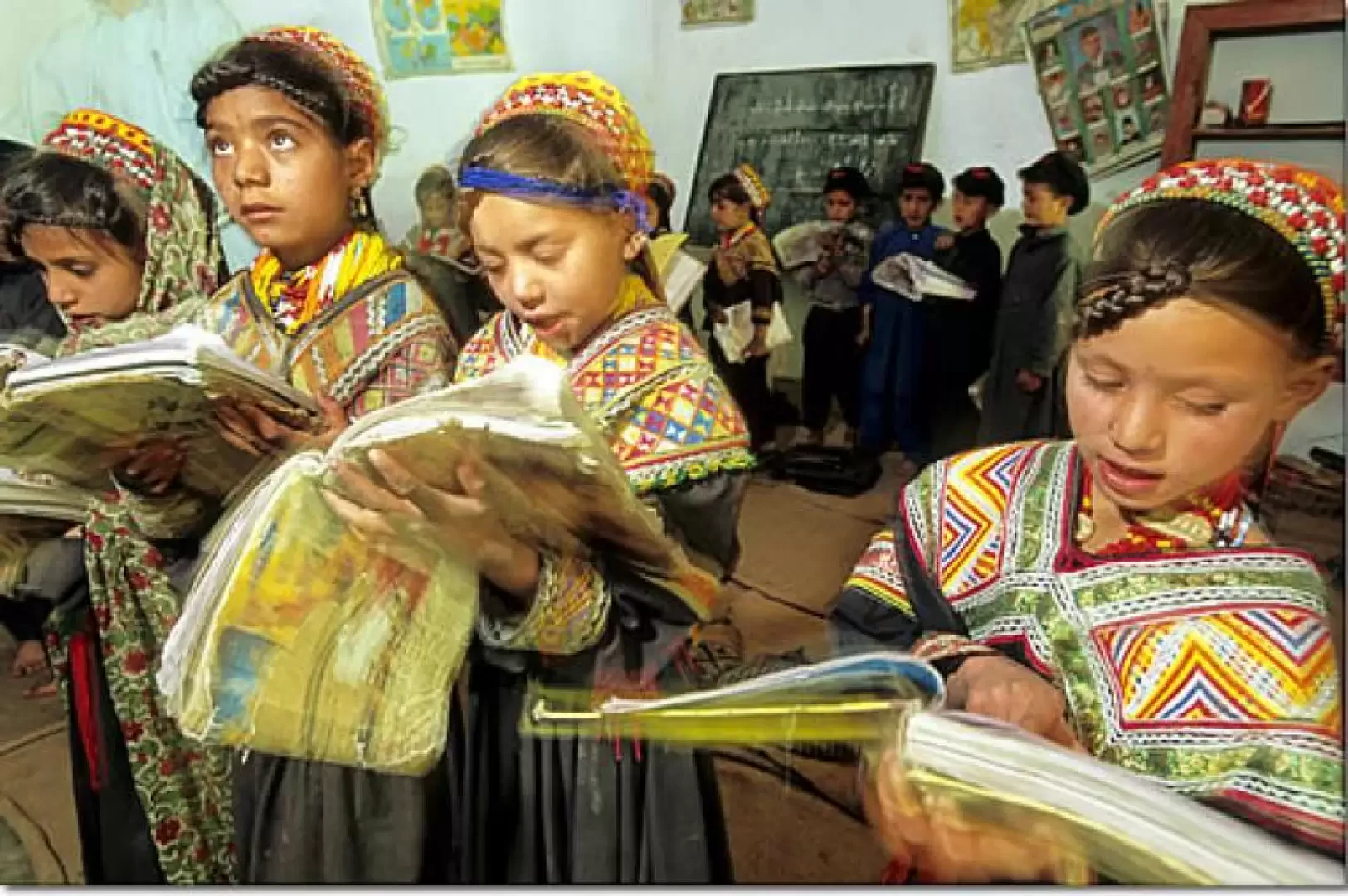Kalash, an exhibition based on the photographic reportages made in 2001 and 2002 respectively by Eric Chrétien and Franck Charton in the high valleys of Chitral, in the Pakistani Hindu-Kush on the border with Afghanistan. The exhibition is organised by the MUSEO NAZIONALE DELLA MONTAGNA - CAI TORINO and the Assessorato alla Montagna della PROVINCIA DI TORINO, with the collaboration of CITTA' DI TORINO, CLUB ALPINO ITALIANO, MONTANEA, CHAMBÉRY PROMOTION and GESCH.
.
Kalash
An exhibition based on the photographic reportages made in 2001 and 2002 respectively by Eric Chrétien and Franck Charton in the high valleys of Chitral, in the Pakistani Hindu-Kush on the border with Afghanistan.
The exhibition is organised by the MUSEO NAZIONALE DELLA MONTAGNA - CAI TORINO and the Assessorato alla Montagna della PROVINCIA DI TORINO, with the collaboration of CITTA' DI TORINO, CLUB ALPINO ITALIANO, MONTANEA, CHAMBÉRY PROMOTION and GESCH.
The Kalash are part of the Kafiri, a people of Indo-European origin and language who remained isolated for centuries in the Hindu-Kush area, straddling Afghanistan and Pakistan, and who at the end of the 19th century still consisted of about 100,000 individuals. Surrounded and protected by the isolation created by the high peaks of the area (in the district of Chitral alone there are about seventy peaks over 6,000 metres, dominated by the 7,690-metre Tirich Mir), the Kafiri (from kafir, infidels, because they were pagans) were not reached by Christianity and resisted Islam until 1895, when those located in Afghan territory were subdued by Emir Abdur Rahman Khan and converted.
The Kalash, on the other hand, were located at the head of the high valleys that were then part of British India and were only connected to Chitral by endless steep paths. They were thus able to escape this colonisation and survive to this day, maintaining their customs and traditions, their culture and their pagan, primitive, polytheistic religion.
Today, the Kalash, discovered by the first English travellers at the end of the 19th century and basically brothers of our ancient ancestors, number only a little over 3,000. Their valleys have been reached by roads and, in the face of the many external contaminations that have ensued, they are struggling to maintain their culture in the face of Eastern religious fundamentalisms and Western tourism, which is often devastating in some ways.
This world at sunset was visited in 1959 by Fosco Maraini, during an expedition to the summit of Saraghrar Peack (7,349 metres); his writings and photographs were published in Cahier No. 57, published in 1988 by the National Mountain Museum (Fosco Maraini, Una vita per l'Asia). Some beautiful wooden statues from their craft tradition were brought to Italy by Paolo Graziosi in 1954 and are now on display at the Museum of Anthropology of the University of Florence.
The Turin exhibition, like the one presented in Chambéry last January, features the beautiful photographs by Franck Charton
for 'Grandes Reportagese' magazine and Eric Chrétien for 'Le Figaro Magazine', complemented by a number of objects documenting the daily life of a people tenaciously perched over two thousand metres above sea level on pastures, forests and steep slopes of rugged mountains.
The exhibition is divided into different sectors: the landscape and habitat; the villages characterised (unique in the Hindu-Kush) by houses made of stone, wood, mud and thatch, joined to each other by ladders placed on the terraces and which can be removed in the event of an enemy attack, so that the village becomes a stronghold; the daily winter and summer life of a pastoral civilisation, with cattle herds in the lower valley and sheep and goats higher up, with its colourful costumes and autarkic handicrafts; religion, with its pantheon rich in gods, its rites and symbols. Particular space is devoted to festivals, especially the winter solstice (Chaumos) and the spring solstice (Joshi), which are very important in trying to understand the beliefs, spirituality and social organisation of the Kalash people, in which women play a decisive role.
Finally, an optimistic view of today's problems, with the appropriate projections towards the future of a people who want to be able to maintain their cultural identity, their customs and millenary traditions, but through the necessary social conquests, for example in the field of hygiene and sanitation, which can be guaranteed by an appropriate combination with education, modernity and innovation.
The exhibition in Turin and Chambéry wants to make a contribution in this sense, also in support of the request that the GESCH Association, created in 1998 by the Spanish-born French naturalist Jordi Magraner, who tragically passed away in Chitral in 2002 after ten years of living with and for the Kalash, made to UNESCO: to classify their three valleys, those of Birir, Bumburet and Rumbur, as a World Heritage Site and to inscribe the entire Kalasha community with its Indo-European language in the intangible cultural heritage.
Kalash
A people of the high valleys of Pakistan
An exhibition of
NATIONAL MOUNTAIN MUSEUM - CAI TORINO / PROVINCE OF TURIN
with the collaboration of
CITY OF TURIN / ITALIAN ALPINE CLUB
MONTANEA / CHAMBÉRY PROMOTION / GESCH
Exhibition venue:
TURIN, NATIONAL MOUNTAIN MUSEUM, 23 SEPTEMBER - 30 OCTOBER 2005
[Provisional entrance: Via G. Giardino 48].
Tickets: full price Euro 5.00 / reduced Euro 3.50 / CAI members Euro 2.50
Opening: 22 September 2005, 6.30 p.m.
Museomontagna Press Office
Tel. 011.6604104 / Fax 011.6604622 / web
www.museomontagna.org
